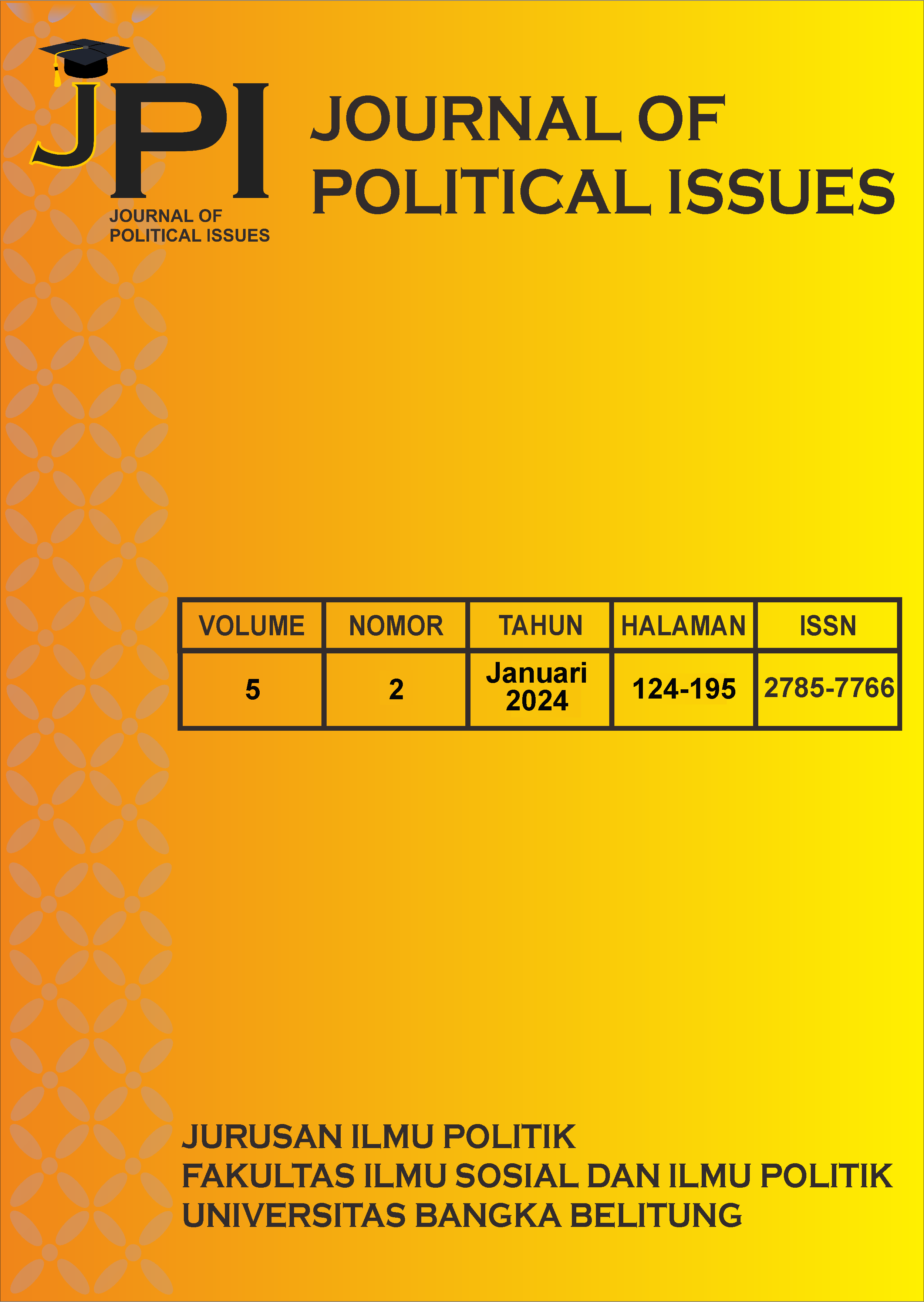The Impact of Local Government Elderly Social Assistance on Out-Of-Pocket Expenditures for the Elderly: A Case Study of Impoverished Elderly in Indonesia in 2020
Pengaruh Bansos Lansia Pemda terhadap Belanja Out-Of-Pocket Lansia: Studi Kasus Lansia Miskin di Indonesia Tahun 2020
Abstract
This research aims to examine the effect of the local government's elderly social assistance program on out-of-pocket (OOP) health spending for the poor elderly group in Indonesia. The data used is Susenas data March 2020 using counterfactual analysis. What is meant by counterfactual in the context of this research is to compare the actual condition of OOP health spending for the elderly when receiving interventions from local government elderly social assistance and without receiving intervention. Because the requirement to be able to carry out a counterfactual analysis is that the subjects of the study must have the same/balanced characteristics, the data used is limited to the elderly in the bottom 40 percent of the economic group. Moreover, the randomization technique is also carried out using the Propensity Score Matching-Nearest-Neighbors (PSM-NN) method, namely constructing data that has similar characteristics into two groups: the group that received treatment and the group that did not receive treatment. The results of this study indicate that the poor elderly group who receive elderly social assistance from the local government has a higher OOP health spending of 26.6 percent compared to the poor elderly group who do not receive assistance. The high spending on OOP was mainly due to an increase in spending on curative.
Downloads
References
Agnes, P. B., Hermawati, S., Maartin, K. O., Trynke, H., Ali, M. G., & Elizabeth, P. (2021). Is Indonesia achieving universal health coverage. Secondary analysis of national data on insurance coverage, health spending and service availability. BMJ Open, 11(10), e050565. https://doi.org/10.1136/bmjopen-2021-050565
Austin, P. C. (2011, May 31). An Introduction to Propensity Score Methods for Reducing the Effects of Confounding in Observational Studies. Multivariate Behavioral Research, 46(3), 399–424. https://doi.org/10.1080/00273171.2011.568786
Baird, K. (2016, January 22). High Out‐of‐Pocket Medical Spending among the Poor and Elderly in Nine Developed Countries. Health Services Research, 51(4), 1467–1488. https://doi.org/10.1111/1475-6773.12444
Cho, Y. I., Lee, S. Y. D., Arozullah, A. M., & Crittenden, K. S. (2008, April). Effects of health literacy on health status and health service utilization amongst the elderly. Social Science & Medicine, 66(8), 1809–1816. https://doi.org/10.1016/j.socscimed.2008.01.003
Cunningham, S. (2020). Causal Inference The Mixtape.
Hall, R. E., & Jones, C. I. (2007). The value of life and the rise in health spending. The Quarterly Journal of Economics, 122(1), 39–72. https://doi.org/10.1162/qjec.122.1.39
Hardie, N. A., Kyanko, K., Busch, S., LoSasso, A. T., & Levin, R. A. (2011, September 30). Health Literacy and Health Care Spending and Utilization in a Consumer-Driven Health Plan. Journal of Health Communication, 16(sup3), 308–321. https://doi.org/10.1080/10810730.2011.604703
Howard, D. H., Gazmararian, J., & Parker, R. M. (2005, April). The impact of low health literacy on the medical costs of Medicare managed care enrollees. The American Journal of Medicine, 118(4), 371–377. https://doi.org/10.1016/j.amjmed.2005.01.010
Katchova, A. (2013). Propensity Score Matching.
Kesehatan, K. (2019). National Health Accounts Indonesia 2019.
Kidd, S., Bjorn, G., Rahayu, K. S., Larasati, D., Yuda, K., Siyaranamuai, M., & Geldes, J. (2019). Perlindungan Sosial bagi Penduduk Lanjut Usia di Indonesia.
Nathan, A. (2020). Melampaui Jaminan Sosial ‘Targeted’ dan Membangun Jaminan Sosial Universal di Indonesia – Islam Bergerak.
Pindyck, R. S., & Rubinfeld, D. L. (2018). Microekonomics Ninth Edition.
Priebe, J. (2017). Old-age Poverty in Indonesia: Measurement Issues and Living Arrangements. Development and Change, 48(6), 1362-1385. https://doi.org/10.1111/dech.12340
Priebe, J., & Howell, F. (2014). Old Age Poverty in Indonesia Empirical Evidence and Policy Options: A Role for Social Pensions. Retrieved from www.tnp2k.go.id
Priebe, J., & Howell, F. (2014). Old Age Poverty in Indonesia Empirical Evidence and Policy Options: A Role for Social Pensions i OLD-AGE POVERTY IN INDONESIA: Empirical Evidence and Policy Options A Role for Social Pensions. Diambil kembali dari www.tnp2k.go.id
Rachmani, E., Hsu, C., Nurjanah, N., Chang, P., Shidik, G., Noersasongko, E., . . . Lin, M. (2019, 12). Developing an Indonesia's health literacy short-form survey questionnaire (HLS-EU-SQ10-IDN) using the feature selection and genetic algorithm. Computer Methods and Programs in Biomedicine, 182. https://doi.org/10.1016/j.cmpb.2019.105047
Ramesh, M. (2014). Social Protection in Indonesia and the Philippines: Work in Progress. Source: Journal of Southeast Asian Economies, 31(1), 40-56.
Rosenbaum, P., & Rubin, D. (1983). The central role of the propensity score in observational studies for causal effects. Diambil kembali dari https://academic.oup.com/biomet/article/70/1/41/240879
Sparrow, R., Suryahadi, A., & Widyanti, W. (2013). Social health insurance for the poor: Targeting and impact of Indonesia's Askeskin programme. Social Science and Medicine, 96, 264-271.
TNP2K, Australian Government, & SMERU. (2020). Situasi Lansia di Indonesia dan Akses terhadap Program Perlindungan Sosial: Analisis Data Sekunder.
World Bank, 2022. Population ages 65 and above (% of total population) - Indonesia. https://data.worldbank.org/indicator/SP.POP.65UP.TO.ZS?locations=ID
Yanovitzky, I., Zanutto, E., & Hornik, R. (2005). Estimating causal effects of public health education campaigns using propensity score methodology. Evaluation and Program Planning, 28(2), 209-220
Copyright (c) 2024 Niar Afdhal Luthfi, Muhammad Hanri

This work is licensed under a Creative Commons Attribution-NonCommercial-ShareAlike 4.0 International License.
- Authors retain copyright and grant the journal right of first publication with the work simultaneously licensed under a Creative Commons Atribusi-Non Commercial-Share Alike (CC BY-NC-SA).
- Authors are able to enter into separate, additional contractual arrangements for the non-exclusive distribution of the journal's published version of the work (e.g., post it to an institutional repository or publish it in a book), with an acknowledgement of its initial publication in this journal.
- Every publication (printed/electronic) are open access for educational purposes, research, and library. Other than the aims mentioned above, the editorial board is not responsible for copyright violation.

















